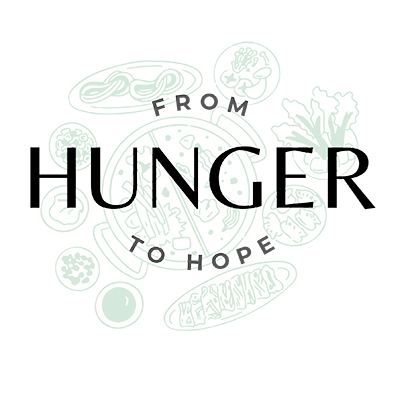Soluble non fermentable fiber is a type of dietary fiber found in many different types of foods. It has important health functions, such as improving digestive regularity, controlling cholesterol levels, regulating blood sugar levels and promoting satiety. Although some forms of dietary fiber must be fermented in the gut for their benefits to be realized, soluble non fermentable fiber does not have to be broken down by the body before it can be used. In this article, we discuss the foods that are high in soluble non fermentable fiber and the potential health benefits of consuming them.
Types of Fiber
Fiber is dietary material found in plant-based foods that the body is unable to digest. It is composed of various components, including soluble and insoluble non-fermentable fibers. There are various types of food that are rich in soluble non-fermentable fibers. These include oats, barley, fruits, and vegetables. Understanding the types of fiber and the foods which contain them can be useful in developing a healthy diet.
Soluble Non-Fermentable Fiber
Soluble non-fermentable fiber is a type of soluble dietary fiber that doesn’t feed bacteria in the gut, meaning it won’t add to the growth of mostly beneficial bacteria which our bodies need for healthy functioning. Also known as inert fiber, this type of fiber does not break down or ferment and instead absorbs other components as it travels through our gastrointestinal system.
It can be found in a variety of plant foods, including fruit and veggies, legumes, nuts and seeds, cereal and grains like oats, barley and rye. Some examples of specific food items containing SIluble Non-Fermentable Fiber include apples, oranges, bananas and avocado; beans such as black beans and white beans; legumes including split peas chickpeas; nuts such as almonds; wheat bread; rolled oats; barley cereal and rye bread. Eating these foods can help increase your daily intake of this soluble non-fermentable fiber.
Foods Containing Soluble Non-Fermentable Fiber
Soluble non-fermentable fiber is a type of fiber that is commonly found in many different foods that we eat regularly. It is a type of fiber that is not broken down or fermented by bacteria in the gut, helping to slow down how quickly food is digested and encouraging healthy digestion. This article will discuss some of the most common foods that contain this type of fiber and how to incorporate them into your diet.
Fruits
Fruits are one of the best sources of soluble non-fermentable fiber. Many fruits contain both soluble fibers that dissolve in water, such as pectin, and insoluble fibers, which do not dissolve in water. Some fruits are particularly rich in soluble fibers and can be a great way to get an intake of this type of fiber. Examples include berries (such as strawberries, blackberries and raspberries), apples, oranges, apricots, peaches, plums and grapes. Apples are a particularly good source as they contain both soluble pectin and insoluble cellulose fiber. Other fruit sources of soluble non-fermentable fiber include all citrus fruits (oranges, lemons, limes and tangerines) and bananas. Dried fruits also provide dietary fiber with consumed dates being particularly rich in pectin-type non-fermentable fiber. In addition to fruit sources of dietry fiber, vegetables such as potatoes (with the skin on), carrots, beets and celery are also good sources of fermentable versus non-fermentable dietary fiber.
Vegetables
Vegetable sources of soluble non-fermentable fiber include legumes such as peas, beans, lentils and chickpeas. These foods are also good sources of protein. Other vegetables that contain soluble non-fermentable fiber include Brussels sprouts, asparagus, artichokes, cauliflower and broccoli. Spinach and sweet potatoes also provide good amounts of this nutrient. For a more complete list of vegetables with insoluble fibers, refer to the USDA National Nutrient Database for Standard Reference.
Fruits are another great source of soluble non-fermentable fiber. Fruits like apples, oranges, peaches and strawberries all contain comparatively high amounts of this nutrient. Raspberries have even higher concentrations and can be an ideal choice for those looking to add more insoluble fiber to their diet. Avocadoes are another great source for those looking to add more healthy fat as well as dietary fiber to their meals or snacks. Other fruits that rank high in dietary fiber include pears, blackberries and prunes; however they tend to be less popular than other options on this list due to their sticky texture or rather sour taste
Legumes
Legumes are an excellent source of soluble non-fermentable fibers, providing on average 8 g of fiber per 100 g cooked. beans, peas and lentils are some popular types of legumes.
Beans: Beans are the most widely consumed type of legumes in many parts of the world and present a great opportunity for those seeking to increase their intake of dietary soluble non-fermentable fibers. As part of a meal, beans serve as a great side dish or main dish when combined with other ingredients such as rice or quinoa. Types include kidney beans, navy beans, black beans and more.
Peas: Peas are another option that can be easily incorporated into any diet. Fresh and frozen varieties can be used in salads, sautéed as side dishes, added to soups and casseroles or served as snacks alone. Peas also make up part of split pea soup which is a traditionally hearty meal adding an element of nutrition to your diet while being gentle on the digestive system due to their high soluble non-fermentable fiber content.
Lentils: Lentils provide an additional source non-fermentable fibers containing both soluble and insoluble types; with 21g/100g cooked being present for each type respectively. This makes them one potential solution for those looking for digestible sources of fiber in order improve gut health or reduce risk factors associated with certain chronic diseases related to digestion and metabolism; such as diabetes mellitus type 2 . Lentils can also help to cushion and ease aches caused by conditions such as Crohn’s disease due to their gentle nature on the digestive tract when consumed regularly. Lentils can be used in recipes like curry or stew, pressure cooked for quick meals or boiled for cold salads making them another versatile source of dietary non fermentable fibers sure to liven up you days mealtimes
Whole Grains
Whole grains, such as whole wheat, rye, and oats are excellent sources of soluble non-fermentable fiber. These grains contain both soluble and insoluble fibers, so eating a variety of these may be beneficial for one’s overall health. Whole grains should be cooked according to the package instructions in order to ensure that all of the fibers in them are available for digestion. As an added benefit, some whole grains can also provide essential vitamins and minerals.
Oats are an especially good source of soluble non-fermentable fiber. Oats can be cooked and eaten as oatmeal or in a variety of dishes such as muffins, granola bars, or pancakes. Oat bran is also a rich source of fiber and can be used as an ingredient in baking recipes or consumed on its own with some fresh fruit or other toppings.
Barley is another type of grain that is high in both soluble and non-fermentable fibers. It can either be cooked like porridge or added to soups, salads, stews, casserole dishes, etc., for texture and flavor. Buckwheat is another grain that contains both short chain fatty acids (SCFAs) and insoluble dietary fibers which have beneficial effects on digestive health as well as cardiovascular health by improving cholesterol levels and helping regulate blood sugar levels.
In general any food item containing “whole” grains should indicate it contains high amounts of both soluble non-fermentable fibers along with other important micronutrients essential for good health.
Benefits of Soluble Non-Fermentable Fiber
Soluble non-fermentable fiber is a type of fiber that has been shown to provide several health benefits and is found in many foods. It is composed mainly of cellulose and hemicellulose. Soluble non-fermentable fiber helps promote regularity and can also help lower cholesterol by binding fat in the intestinal tract. This type of fiber passes through the digestive tract, undigested, providing bulk that aids digestion and retaining water to aid in stool formation.
Benefits of consuming soluble, non-fermentable fiber include:
•Improving regularity
•Helping to prevent constipation
•Helping reduce cholesterol levels
•Promoting gut health by providing bulk for friendly bacteria to feed on
•Preventing hunger pangs by causing a feeling of fullness for longer periods of time.
Foods rich in soluble, non-fermentable fiber include: oats and oatmeal, barley, apples, oranges, carrots, figs, nuts and seeds (such as flaxseed), wheat bran and wheat germ as well as soy products such as tofu. Additionally some breakfast cereals also contain essential amounts of this type of beneficial dietary fiber.












